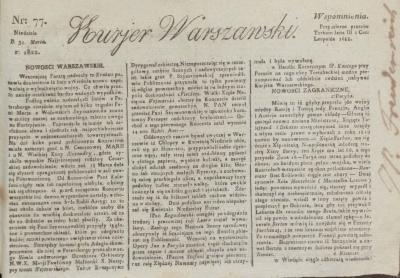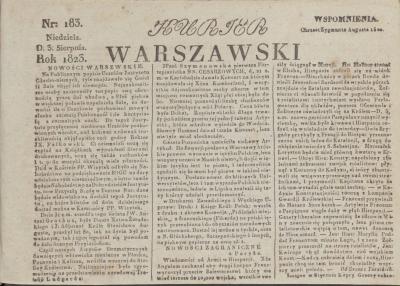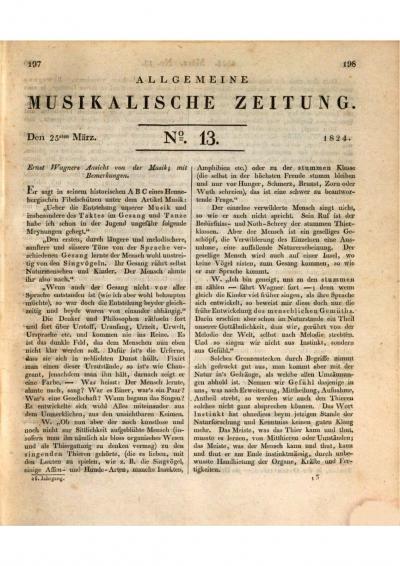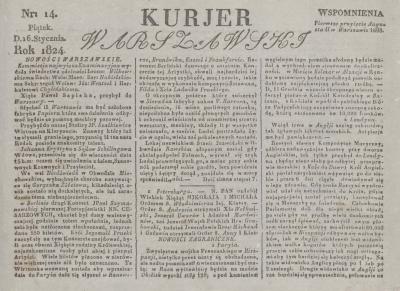Madame Szymanowska and Goethe – a burning love?

He mentioned Szymanowska and her sister for the first time in his diary on 14 August. After discussions with Baron von Manteuffel and Major von Wartenberg, he met the pianist on that day, presumably at the concert that he told Zelter about in a letter ten days later. “With Madame Szymanowska, who played the piano in a neighbouring house, a piece by Hummel, one of hers and another two, really wonderful. Walked with her towards the mill. The rain ambushed us. With umbrellas to the source. In the evening on the terrace.”[28] The day after that and the day after that, he wrote the poems for the two sisters, transferred them into two albums on the third day, and then presented them, presumably in French[29]: “Poems accomplished and written in the two albums. Madame Szymanowska visited me. Curious about the contents of the album.”[30] Looking through the diary, there were no further meetings until 20 August and 4 September because Goethe had now travelled to Eger and to Carlsbad, partly to learn about geology and to complete his mineral collection. On 7 September, Szymanowska had obviously left Marienbad without having seen Goethe again, because he noted: “Found Madame Szymanowska’s embroidered plate Similarly other sent in during my absence.”[31]
Goethe also told other people he wrote to about the Polish pianist. On 18/19 August, he wrote the same lines to his daughter-in-law Ottilie and to the Berlin lawyer, philologist and State Councillor Christoph Ludwig Friedrich Schultz: “Madame Szymanowska, a female Hummel with the easy Polish manner, has made me extremely happy these last few days; behind the Polish amiability was the greatest talent, just as a foil so to speak or […] vice versa. The talent would overwhelm you, if it were not for her charm.”[32] He allowed his son August to see his heartache, which had been caused by Ulrike and eased by the two musicians Anna Milder-Hauptmann and Szymanowska: “There is just a certain irritability left over, which I only became aware of when listening to music, without Mmes Milder and Szymanowska, I would never have done that.”[33] The composer and pianist Johann Nepomuk Hummel, who, it should be added, was a student of Mozart, Antonio Salieri and Haydn, was court conductor in Weimar from 1819 and one of the best known personalities in the city. According to the musicologist Joel Sachs, no tourist’s visit to Weimar would have been complete without having seen Goethe and heard Hummel playing.[34] Szymanowska probably met Hummel in St. Petersburg in 1822, where he was playing concerts at the same time as Szymanowska on his only trip to Russia, as was reported by the Allgemeine musikalische Zeitung.[35]
[28] 14 August 1823. Goethes Werke. Weimarer Ausgabe, III. Abteilung (Tagebücher), Volume 9, 1897, page 92
[29] Both poems “both German and French” (Karpeles 1890, see Literature, page 39). “… which he wrote down for her [Szymanowska] in a German and a French version.” (Urzidil 1981, see Literature, page 170). The Swiss private scholar and numismatist Frédéric Soret, who translated some of Goethe’s scientific works into French, relates the following: “Goethe had translated the verses that he had written for Szymanowska into French prose but was very unhappy with it and asked me to have a new translation done by Chancellor von Müller.“ (19/1/1824, in: Goethes Unterhaltungen mit Friedrich Soret. Nach dem französischen Texte … published by C.A.H. Burkhardt, Weimar 1905, page 35, online resource: https://archive.org/details/goethesunterhal00goetgoog/page/n5/mode/2up)– “… he even translated this poem in French as Szymanowska could not speak German that well” (Stolarzewicz 2014, see Online, page 118). – Goethe also conducted his correspondence with Szymanowska in French on the occasion of his trip to Eger and Carlsbad: “Malheureusement, Madame, étant condanné à partir demain il ne me reste que de soigner mes lèvres informes que déteste de tout mon coeur. Je me vois à grand regret privé de l'aimable societé qui me preparoit une si belle soirèe, et je serois tout à fait inconsolable si je ne me repetois toujours en prose ce que j'ai osé dire en Verse, y joignant l'espérance de me réjouir bientot à Weimar du plus beau talent et de la plus intéressante societé qu'on puisse imaginer. Adieu donc, Madame, gardés moi Votre précieux Souvenir. M.[arien] B.[ad] 19 Aout 1823 (To Maria Szymanowska, 19.8.1823. Goethes Werke. Weimarer Ausgabe, IV. Abteilung [Briefe], Vol. 38, 1897, page 183)
[30] 18 August 1823. Goethe: Tagebücher (see Note 28), page 94
[31] 7 September 1823. Ibid, page 110
[32] To Ottilie von Goethe, Marienbad, 18/8/1823. Goethes Werke. Weimarer Ausgabe, IV. Abteilung (Briefe), Vol. 38, 1897, page 175; To Christoph Ludwig Friedrich Schultz, Marienbad, 19/8/1823, ibid, page 181
[33] To August von Goethe, Eger, 24/8/1823. Ibid, page 192
[34] Joel Sachs: Johann Nepomuk Hummel, in: The New Grove Dictionary of Music and Musicians, published by Stanley Sadie, volume 8, London 1980, page 782
[35] “Petersburg. In winter and in the great fast of 1822, the number of public concerts held by artists at their best, in relation to those in previous years, was only small, but all the greater then were the concerts for the poor […] Madame Symanoffska, pianist from Warsaw, who was here at the same time as Mr Hummel, got the public interested in her by providing an account of her situation; her playing at private parties was also pleasing: because she demonstrated natural feeling and considerable skill…” Allgemeine musikalische Zeitung, No. 34, Leipzig, 20 August 1823, lines 552 f., online resource: https://www.digitale-sammlungen.de/de/view/bsb10527973?page=288,289
















